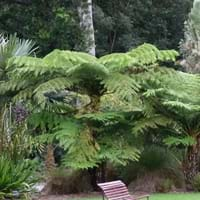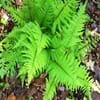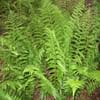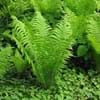Life Span
Perennial
Perennial
Origin
Northeastern United States, Mid-Atlantic United States, Southeastern United States, Central United States, Canada
Australia
Types
Not available
Not Available
Habitat
Damp Places, open Woodlands, Rocky areas
Damp Places
USDA Hardiness Zone
3-8
10-15
Sunset Zone
Not Available
H2, 8, 9, 14, 15, 16, 17, 19, 20, 21, 22, 23, 24
Habit
Thicket/Colonizing
Arching/Fountain-shaped
Flower Color
Not Available
Not Available
Flower Color Modifier
Bicolor
Bicolor
Fruit Color
Not Available
Not Available
Leaf Color in Spring
Light Green, Yellow green
Light Green
Leaf Color in Summer
Light Green, Yellow green
Dark Green
Leaf Color in Fall
Light Green, Yellow green, Bronze
Dark Green
Leaf Color in Winter
Not Available
Dark Green
Leaf Shape
Lanceolate
Fern like
Plant Season
Spring, Summer, Fall
Spring, Summer, Fall, Winter
Sunlight
Full Shade, Partial shade
Partial shade
Type of Soil
Clay, Loam, Sand
Loam
The pH of Soil
Acidic
Acidic
Soil Drainage
Average
Average
Bloom Time
Not Available
Not Available
Tolerances
Full Sun, Rabbit, Shade areas, Variety of soil types
Not Available
Where to Plant?
Ground
Ground
How to Plant?
Spores
Spores
Plant Maintenance
Medium
Medium
Watering Requirements
Medium
Requires consistently moist soil
In Summer
Lots of watering
Lots of watering
In Spring
Moderate
Moderate
In Winter
Average Water
Average Water
Soil Type
Clay, Loam, Sand
Loam
Soil Drainage Capacity
Average
Average
Sun Exposure
Full Shade, Partial shade
Full Shade, Partial shade
Pruning
Not Available
Remove damaged leaves, Remove dead branches, Remove dead leaves
Fertilizers
All-Purpose Liquid Fertilizer, No fertilizers needed
All-Purpose Liquid Fertilizer
Pests and Diseases
Not Available
Squirrels
Plant Tolerance
Full Sun, Rabbit, Shade areas, Variety of soil types
Drought
Flowers
Not Available
Not Available
Flower Petal Number
Single
Single
Foliage Texture
Fine
Fine
Foliage Sheen
Matte
Matte
Allergy
Not Available
Carcinogenic
Aesthetic Uses
Cottage Garden, Showy Purposes
Not Available
Beauty Benefits
Not Available
Not Available
Edible Uses
Not Available
Yes
Environmental Uses
Air purification, Used to establish native woodland, Wild areas
Air purification
Medicinal Uses
chills, Lung Problems
Astringent
Part of Plant Used
Leaves
Leaves, Stem
Other Uses
Grown for shade, Making Perfumes
Not Available
Used As Indoor Plant
No
No
Used As Outdoor Plant
Yes
Yes
Garden Design
Container, Groundcover
Container, Feature Plant, Tropical
Botanical Name
DENNSTAEDTIA punctilobula
DICKSONIA antarctica
Common Name
Hayscented Fern
Australian tree fern, Tasmanian tree fern, hardy tree fern, soft tree fern, woolly tree fern
In Hindi
Hayscented Fern
Tasmanian Tree Fern
In German
Hayscented Fern
Tasmanian Tree Fern
In French
Hayscented Fern
Dicksonia antarctica
In Spanish
Hayscented helecho
Balantium antarcticum
In Greek
Hayscented Fern
Tasmanian Tree Fern
In Portuguese
Hayscented Fern
Dicksonia antarctica
In Polish
Hayscented Fern
Diksonia antarktyczna
In Latin
Fern Hayscented
Tasmanian Tree Fern
Phylum
Pteridophyta
Pteridophyta
Class
Filicopsida
Filicopsida
Order
Polypodiales
Polypodiales
Family
Dennstaedtiaceae
Dicksoniaceae
Genus
Dennstaedtia
Dicksonia
Clade
Not Available
Not Available
Tribe
Not Available
Not Available
Subfamily
Not Available
Not Available
Number of Species
Not Available
Difference Between Hayscented Fern and Tasmanian Tree Fern
If you are confused whether Hayscented Fern or Tasmanian Tree Fern are same, here are some features about those plants to help you choose better. Many people think that these two plants have the same characteristics, but one can see Hayscented Fern and Tasmanian Tree Fern Information and learn more about it. Fertilizers required for proper growth of Hayscented Fern are All-Purpose Liquid Fertilizer and No fertilizers needed, whereas for Tasmanian Tree Fern fertilizers required are All-Purpose Liquid Fertilizer. Hence, one should know the basic difference between Hayscented Fern and Tasmanian Tree Fern if you are planning to have them in your garden to enhance its beauty.
<
Flowering PlantsImportance of Hayscented Fern and Tasmanian Tree Fern
Want to have the most appropriate plant for your garden? You might want to know the importance of Hayscented Fern and Tasmanian Tree Fern. Basically, these two plants vary in many aspects. Compare Hayscented Fern and Tasmanian Tree Fern as they differ in many characteristics such as their life, care, benefits, facts, etc. Every gardener must at least have the slightest clue about the plants he wants to plant in his garden. Compare their benefits, which differ in many ways like facts and uses. The medicinal use of Hayscented Fern is chills and Lung Problems whereas of Tasmanian Tree Fern is Astringent. Hayscented Fern has beauty benefits as follows: Not Available while Tasmanian Tree Fern has beauty benefits as follows: Not Available.
Compare Facts of Hayscented Fern vs Tasmanian Tree Fern
How to choose the best garden plant for your garden depending upon its facts? Here garden plant comparison will help you to solve this query. Compare the facts of Hayscented Fern vs Tasmanian Tree Fern and know which one to choose. As garden plants have benefits and other uses, allergy is also a major drawback of plants for some people. Allergic reactions of Hayscented Fern are Not Available whereas of Tasmanian Tree Fern have Carcinogenic respectively. Having a fruit bearing plant in your garden can be a plus point of your garden. Hayscented Fern has no showy fruits and Tasmanian Tree Fern has no showy fruits. Also Hayscented Fern is not flowering and Tasmanian Tree Fern is not flowering . You can compare Hayscented Fern and Tasmanian Tree Fern facts and facts of other plants too.





